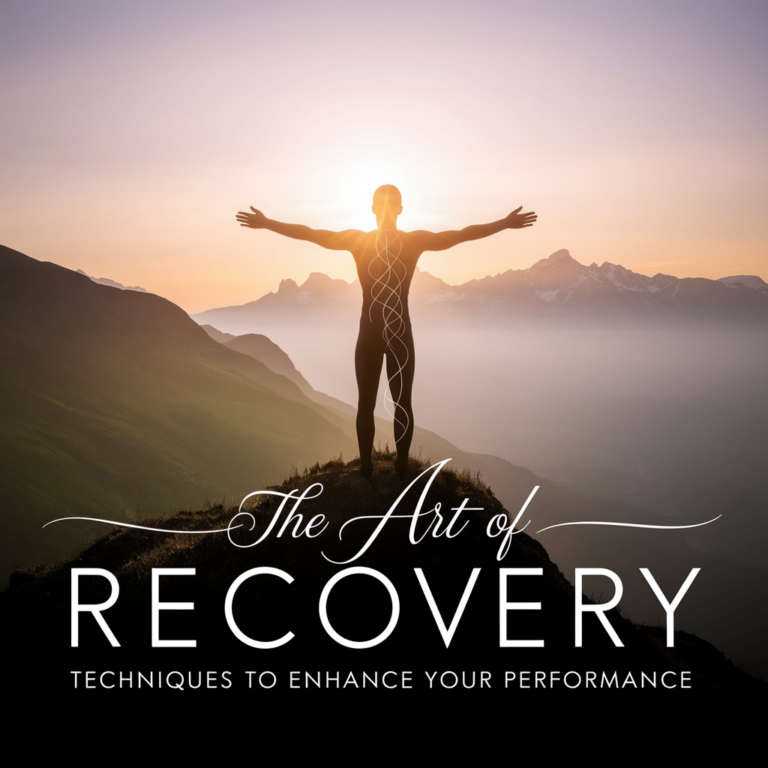Boosting Your Endurance: Tips for Long-Distance Runners
Endurance running—there’s something almost poetic about it, isn’t there? The rhythmic sound of your feet hitting the pavement, the wind brushing against your face, and the exhilarating sense of freedom that comes with putting one foot in front of the other for miles and miles. But let’s face it, running long distances can also feel like an uphill battle (literal and metaphorical). Whether you’re preparing for your first marathon or you’re a seasoned ultra runner, boosting your endurance is a never-ending quest.
As someone who’s laced up my running shoes countless times, I’ve learned a thing or two about what it takes to increase endurance—and it’s more than just clocking the miles. So let’s dive into some tried-and-true strategies, sprinkled with a bit of personal flair and a few chuckles along the way.
Understanding Endurance
First off, let’s clarify what we mean by endurance. In the realm of running, endurance refers to your body’s ability to sustain physical activity over an extended period. It’s not just about how fast you can run; it’s about how long you can keep going without feeling like you’ve just completed an Ironman triathlon (we’ve all been there, right?).
There are generally two types of endurance relevant to runners: aerobic and anaerobic. Aerobic endurance is your body’s ability to sustain activity over long periods, using oxygen to fuel your muscles. Think long, slow runs. Anaerobic endurance, on the other hand, is about short bursts of high-intensity activity, where your body relies on energy sources stored in the muscles. Both are important, and finding the right balance can redefine your long-distance experience.
Training Methodologies
1. The Long Run
Ah, the long run—a rite of passage for every distance runner. Typically done once a week, this is where you build your endurance foundation. The key is to increase your mileage gradually; the oft-quoted rule is the 10% rule. This means you shouldn’t increase your weekly mileage by more than 10% to avoid injury. I recall my first long run—it felt like I was trying to move a mountain. But with the right pacing and determination, I found my rhythm.
2. Interval Training
While long runs are essential, incorporating interval training can significantly boost your overall endurance. This involves alternating between high-intensity bursts and recovery periods. For example, you could sprint for one minute, followed by two minutes of jogging or walking. This not only improves your speed but also enhances your aerobic capacity. I still remember my first interval session—my lungs were screaming, but the feeling of accomplishment was worth every second of discomfort.
3. Tempo Runs
Tempo runs are another valuable tool in your training arsenal. These runs are typically done at a “comfortably hard” pace—faster than your normal long-run pace, but not quite a sprint. They help your body adapt to sustained efforts, teaching it to efficiently process oxygen and clear lactic acid. A good rule of thumb is to aim for a pace that you could sustain for about an hour in a race. The first time I tried a tempo run, I thought I was going to pass out, but now they’re a staple in my routine.
Nourishing Your Body
Training your body is crucial, but what you put into it matters just as much. Nutrition plays a vital role in boosting endurance. Here’s a breakdown of some key components:
1. Carbohydrates are Your Friend
Carbohydrates are the primary fuel source for endurance runners. Think of them as the gasoline for your engine. A diet rich in complex carbohydrates—such as whole grains, fruits, and vegetables—can help keep your energy levels high. On the evenings before a long run, I often find myself indulging in a pasta feast (and hey, who doesn’t love some good spaghetti?).
2. Hydration: Don’t Overlook It
Staying hydrated is non-negotiable. Dehydration can lead to fatigue, decreased performance, and even injury. It’s essential to drink water throughout the day, but also consider electrolyte drinks during long runs. I’ve made the mistake of heading out for a long run without enough hydration—not a fun experience. Carrying a water bottle or using hydration packs can make a world of difference.
3. Protein for Recovery
After all those miles, your muscles need some TLC. Consuming protein post-run helps repair and rebuild muscle tissue. Aim for a combination of protein and carbs within 30 minutes of finishing your workout. A smoothie with protein powder, or a turkey sandwich can do wonders. I’ve been known to wolf down a peanut butter and banana sandwich after a long run—simple, effective, and so satisfying!
Rest and Recovery
It might seem counterintuitive, but rest days are just as essential as training days. Your body needs time to recover and rebuild after those grueling workouts. Here are a few strategies to ensure you’re giving your body the rest it deserves:
1. Schedule Rest Days
Incorporate at least one rest day into your weekly routine. This doesn’t mean you have to be a couch potato; light activities like walking or yoga can aid recovery. I’ve found that my best runs often come after a day of rest—funny how that works!
2. Sleep Like You Mean It
Never underestimate the power of a good night’s sleep. Your body does a lot of its repair work while you’re snoozing. Aim for 7 to 9 hours of quality sleep each night to optimize recovery. Trust me, a well-rested runner is a happy runner.
3. Listen to Your Body
If you’re feeling fatigued or experiencing pain, don’t ignore it. Pushing through discomfort can lead to injuries that could sideline you for weeks or even months. It’s okay to take a step back and allow your body to heal. I learned this the hard way during a particularly ambitious training cycle—I ended up sidelined with a stress fracture. Lesson learned!
The Mental Game
Boosting your endurance isn’t just about the physical; your mental game is equally important. Staying motivated and focused can be your secret weapon when the miles get tough.
1. Set Realistic Goals
Setting achievable goals gives you something to strive for. Whether it’s completing a certain distance without stopping or shaving time off your personal best, having a target can keep you motivated. I remember setting a goal to run my first half marathon—crossing that finish line was a moment I’ll never forget.
2. Find Your Why
Understanding why you run can be a powerful motivator. Is it for fitness, stress relief, or perhaps to challenge yourself? Reflecting on your purpose can reignite your passion when enthusiasm wanes. I often remind myself that I run because it makes me feel alive—plus, I enjoy the post-run euphoria (and the occasional donut).
3. Use Visualization Techniques
Visualizing success can be a game-changer. Picture yourself crossing the finish line, feeling strong and accomplished. This mental practice can help build confidence and resilience, especially in the days leading up to a race. I still visualize the finish line of my favorite races—it never fails to get my adrenaline pumping.
Cross-Training: Adding Variety
Every good runner knows that cross-training is essential for building endurance without the wear and tear that comes from just running. Here are some activities that complement your running:
1. Cycling
Cycling provides an excellent low-impact way to build endurance while giving your joints a break. It’s a fantastic way to work on your aerobic fitness, and let’s be honest—there’s something liberating about zipping through the streets on two wheels.
2. Swimming
Swimming is another excellent cross-training exercise. It’s a full-body workout that enhances cardiovascular endurance without stressing your legs. Plus, if you’re like me and enjoy the water, it’s a refreshing change of pace.
3. Strength Training
Strength training should not be overlooked. Building muscle helps improve your running economy, making you a more efficient runner. Focus on core strength and lower body workouts—squats, lunges, and planks can do wonders for your running performance.
Finding Your Community
Don’t underestimate the power of community in your running journey. Joining a running group or finding a training buddy can provide motivation, accountability, and camaraderie. Plus, it’s a great way to meet like-minded folks who share your passion for pounding the pavement.
1. Local Running Clubs
Many cities have running clubs that welcome runners of all levels. These groups often organize group runs and races, creating a supportive environment. I once joined a local club and was amazed at the friendships I built while pushing each other through early morning runs.
2. Online Communities
If local groups aren’t your thing, consider online running communities. Websites and social media platforms often have forums and groups where runners share tips, training plans, and encouragement. I’ve found some great advice and motivation from fellow runners across the globe.
Conclusion: The Road Ahead
So there you have it—a comprehensive guide to boosting your endurance as a long-distance runner. From training methodologies to nutrition, recovery, and the mental game, each element plays a critical role in your journey. Remember, it’s a marathon, not a sprint (pun intended!).
As you lace up your shoes for your next run, keep these tips in mind. Embrace the journey, celebrate the small victories, and, above all, find joy in the process. After all, every step you take brings you closer to your goals—one mile at a time. And who knows? You might just discover a deeper love for running than you ever imagined.
Happy running!







